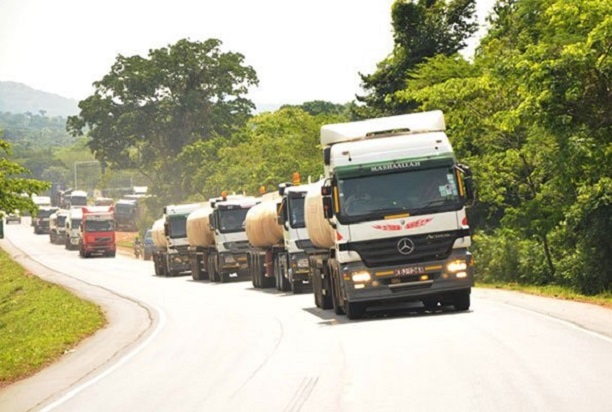The petroleum marketing industry in Uganda experienced mixed fortunes over the last six months as the importation of diesel (AGO) significantly fell below that of petrol (PMS) as uncertainties in the economy continued.
According to records at the Ministry of Energy and Mineral Development and at the Uganda Revenue Authority, diesel imports fell by 41.54 million liters in the period July to December 2022 to a total imported volume of 483 million liters, compared to the same period of the previous year.
This came as the price of diesel stayed relatively high as the whole industry was experiencing a steady fall in the cost of crude and refined products. There was also a decline in the imports of Kerosene (BIK) from 2.46 million liters to 24,846,000 liters.
On the other hand, however, there was some boom in petrol imports by 63.9 million liters in the last half year to 574,502,414 liters, as the motoring industry started to return to normalcy after general price hikes slowed down the demand for motorized transport, especially between June and August.
According to URA, marketing companies also experienced poor business in the last six months of 2022 due to unstable prices on the global market. This was mainly occasioned by the disruptions in the supply chain over the year that saw prices go to record highs of close to 7,000 Shillings a liter for Petrol, while Diesel touched 6,400 Shillings.
This came over a period of less than a year from 3,800 Shillings for petrol and 3,400 for diesel, while Kerosene jumped from about 2,900 Shillings to close to 5,000 a liter by July last year. A recovery in global economic activities led to the demand for petroleum to shoot up and impact the prices at the pump stations.
This was made worse when the Russian invasion of Ukraine disrupted the global supply chain, pushing crude prices back to more than 100 dollars per barrel. Earlier, at the beginning of 2022, there was another hiccup for Uganda after truck drivers parked their vehicles at the border with Kenya protesting what they called the unfair government of Uganda directives that they pay for a Covid-19 test before being allowed into the country.
The resultant scarcity in Uganda pushed the prices to more than 7,000 Shillings a liter, the crisis easing ten days later after the impasse was resolved. URA Commissioner General John Musinguzi also says that the marketers were affected by the uncertainty over the elections in Kenya and, unsure about the safety of their businesses, the importers switched to the more expensive Tanzanian route.
However, as the stocks imported via the central corridor were still in the reserves, prices started easing and the company was forced to sell the products at a loss, according to Musingusi.
Consequently, Petroleum Duty fell by 69.80 billion shillings to 1.345 trillion shillings in the second half of 2022, as importers were reeling from the shortfall. The Tanzanian route, though considered safer, is longer than the Kenya route and, importers say, this caused an average additional 1000 dollars per container (in the case of solid cargo).
The increase, which was mainly registered in petrol, URA says, partly explains the fall is seen in the pump prices now, while the low import of diesel is contributing to the relatively high prices of the product. Fuel imports increased in the first quarter (July to September) of the 2022/23 financial year, according to URA. The increase in the imports of petrol coincided with an increase in the imports of motor vehicles and motorcycles during the period.
For example; personal motor vehicles increased by 113.06 billion shillings, while motorcycles increased by 40.98 billion shillings in import value, both of which mainly consume petrol. On the other hand, the largely diesel-consuming vehicles, which are commercial vehicles registered a decline in imports while even the increase in re-export of vehicles was registered in this category.
Over the period, at least 180,000 motor vehicles were imported, 30 percent of them re-exported, especially the goods vehicles, according to Abel Kagumire, Commissioner of Customs.
-URN





